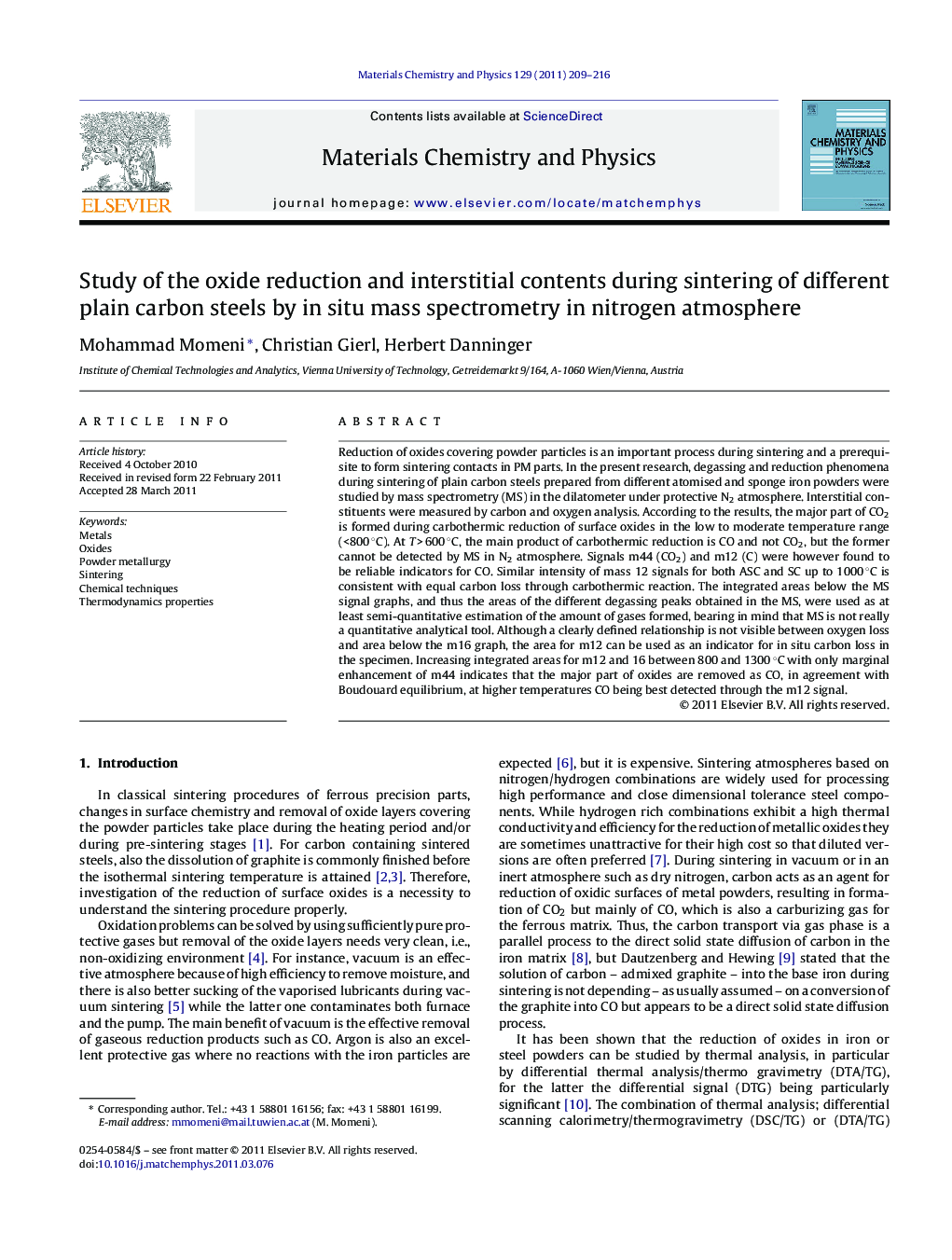| کد مقاله | کد نشریه | سال انتشار | مقاله انگلیسی | نسخه تمام متن |
|---|---|---|---|---|
| 1524517 | 1511832 | 2011 | 8 صفحه PDF | دانلود رایگان |

Reduction of oxides covering powder particles is an important process during sintering and a prerequisite to form sintering contacts in PM parts. In the present research, degassing and reduction phenomena during sintering of plain carbon steels prepared from different atomised and sponge iron powders were studied by mass spectrometry (MS) in the dilatometer under protective N2 atmosphere. Interstitial constituents were measured by carbon and oxygen analysis. According to the results, the major part of CO2 is formed during carbothermic reduction of surface oxides in the low to moderate temperature range (<800 °C). At T > 600 °C, the main product of carbothermic reduction is CO and not CO2, but the former cannot be detected by MS in N2 atmosphere. Signals m44 (CO2) and m12 (C) were however found to be reliable indicators for CO. Similar intensity of mass 12 signals for both ASC and SC up to 1000 °C is consistent with equal carbon loss through carbothermic reaction. The integrated areas below the MS signal graphs, and thus the areas of the different degassing peaks obtained in the MS, were used as at least semi-quantitative estimation of the amount of gases formed, bearing in mind that MS is not really a quantitative analytical tool. Although a clearly defined relationship is not visible between oxygen loss and area below the m16 graph, the area for m12 can be used as an indicator for in situ carbon loss in the specimen. Increasing integrated areas for m12 and 16 between 800 and 1300 °C with only marginal enhancement of m44 indicates that the major part of oxides are removed as CO, in agreement with Boudouard equilibrium, at higher temperatures CO being best detected through the m12 signal.
► Degassing phenomenon was studied in plain steels with different iron base powders.
► The integrated area below the MS m12 graph can be used as an indicator of formed CO.
► The integrated area is an indicator for in situ carbon loss in the specimen.
► Carbon loss and area below the m12 graph can be correlated.
Journal: Materials Chemistry and Physics - Volume 129, Issues 1–2, 15 September 2011, Pages 209–216